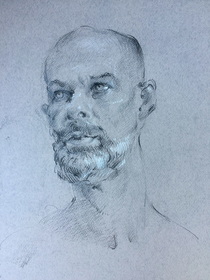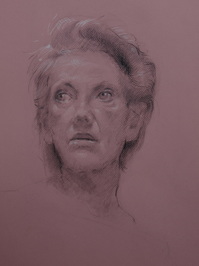
We take for granted the discipline of plaster cast and drawing from life as if it were just part of the required classical curriculum as an art student at an academy or atelier, but seldom stop to consider why it is so important.
Even master Abstract Expressionist painter
Hans Hofmann exhorted, “life and nature are a constant stimulus for a creative mind,” imploring to always work from life.
At first thought, it is the discipline of hand-eye coordination to get the whole thing going by representing what we see in front of us. It is also totally different than copying a print or photograph, as we have two eyes and can see around an object.
A simple test can demonstrate this: Try giving a “thumbs up” at arms length straight in front of you. Close one eye looking directly at it. Now switch and close the other eye, alternating repetitively. Notice that you are seeing a slightly different view with each wink. This coarsely explains why depth and atmosphere are observed from life as opposed to seeing it on a flat surface.
Motion in this instance is not only a contributing factor but a necessity —
the model moves as well as the artist. Perhaps you have tried taking a photo with a mobile device, just to have the object move off the viewing frame, that moment of hesitation, of human pulse and breath.
During the recent van Dyck show at the Frick Collection, there was a unique opportunity to see up close the drawing studies Sir Anthony made from life for his heroic portraits. They were presented in the downstairs galleries equipped with magnifying glasses allowing the eager participants a rare front row seat at a venue second to none. Spontaneously rendered from life, much like a Mozart sonata, were hands piercing through deftly intertwined fabric, sleeves of satin and lace, descriptively beautiful!
It is incumbent upon an artist not to just copy previous historic styles of painting but to find one’s own voice in this accelerated world. Studying the model from life allows the decision of what to employ and what to leave out, building upon the great knowledge and schools which have shone so brightly.
Although the cave drawings at Lascaux, France are ancient, they are fresh and full of life, speaking over the millennia. Rendered from memory, which is actually a slower process of working from life, the creator(s) conveyed their mindful vision.
So to me, as an artist, drawings seem to be the most intimate connection with an artist’s hand.
